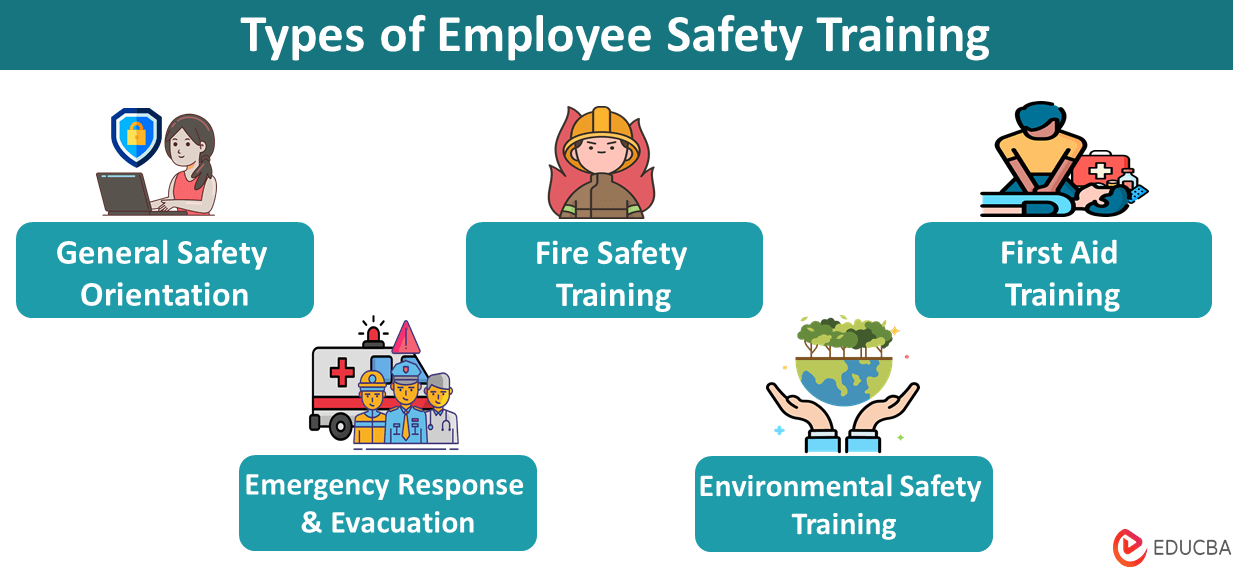Introduction to Employee Safety
Employee safety training includes training your employees in safety measures, including fire safety, first aid, and general safety. It is crucial for maintaining ethical and security standards in your business. This ensures that your team complies with important rules and regulations, promoting a secure, accident-free workplace.
Employee safety training offers numerous benefits, such as regulatory compliance and fewer accidents. These advantages are essential for businesses aiming to fortify a secure, accident-free, and more productive work environment. In essence, prioritizing safety training contributes to your business’s overall success and well-being.
Understanding Employee Safety Training
Employee safety training is essential for providing workers with important safety knowledge and skills like CPR. This training helps prevent accidents, promotes a safety culture, and ensures compliance with health and safety rules, such as those from the Occupational Health and Safety Administration (OSHA). Employees must know how to respond to emergencies like medical incidents or evacuations.
Safety training is an ongoing process, requiring regular sessions either every six months or annually. This way, businesses can stay up-to-date with safety standards and address new risks. Regular training also reinforces employee safety practices, ensuring everyone is well-prepared for a secure work environment.
Common Types of Employee Safety Training
To help you further understand what employee safety training entails, explore these common types of training programs:
1. General Safety Orientation
Provides a comprehensive introduction to safety guidelines and protocols within the workplace.
Purpose: Helps employees understand the importance of safety, familiarizes them with company-specific safety policies, and establishes a safety-conscious mindset.
2. First Aid Training
A first aid course teaches fundamental first aid skills, including CPR, wound dressing, and basic emergency response.
Purpose: Equips employees with the knowledge and skills to provide immediate assistance in medical emergencies, promoting a safer workplace.
3. Fire Safety Training
Covers fire prevention strategies, evacuation procedures, and the proper use of firefighting equipment such as fire extinguishers. Incorporating fire inspection software helps maintain regular checks on all equipment and safety protocols.
Purpose: Ensures employees are prepared to prevent and respond to fires effectively, minimizing risks and promoting a swift and organized evacuation if needed.
4. Emergency Response & Evacuation
Focuses on preparing employees to respond to various emergencies, including workplace violence, natural disasters, or other critical incidents.
Purpose: Guides actions during emergencies, ensuring a coordinated response and a safe evacuation process for all employees.
5. Environmental Safety Training
Addresses environmental regulations and best practices to ensure compliance and reduce the organization’s environmental impact.
Purpose: Promotes awareness of environmental hazards, encourages responsible practices, and helps maintain a sustainable and compliant workplace.
Steps to Develop an Effective Safety Training Program
Creating an effective employee safety training program requires extensive deliberation. Here are five vital steps to ensuring you develop a program that aligns with your business and employee needs:
Step 1: Identify Training Needs
Conduct a comprehensive assessment of your business’s safety requirements. Identify the specific knowledge and skills your workforce needs to ensure their safety. For instance, if your employees handle toxic chemicals regularly, prioritize chemical safety training to mitigate potential incidents.
Step 2: Set Clear Objectives
Establish precise and actionable objectives for your safety training program. For example, aim to reduce workplace accidents by a specific percentage within a defined timeline. Create measurable criteria to gauge the accomplishment of these objectives, providing clarity on when they have been successfully achieved.
Step 3: Develop Engaging Training Materials
Ensure your safety training is effective by making it engaging. Utilize visual materials such as presentations, handouts, and videos to communicate crucial information captivatingly. Incorporate interactive elements like quizzes and role-playing activities to keep employees engaged and enhance the training experience.
Step 4: Choose Appropriate Training Methods
Select training methods that suit your business type and employee preferences. For hybrid-remote teams, virtual e-learning workshops might be the most effective. Diversify your approach by combining various methods, such as microlearning modules and practical training, to cater to different learning styles within your workforce.
Step 5: Create a Well-Organized Training Schedule
Organize your safety training schedule meticulously to ensure a smooth implementation. Consider the needs of your employees, including breaks and comfortable learning experiences. Clearly define dates, times, and locations for each session, promoting attendance, minimizing disruptions, and accommodating the diverse needs of your workforce.
Harnessing Technology for Employee Safety
In addition to training, incorporating technology into your workplace can enhance employee safety. Implementing advanced security systems, such as surveillance with real-time monitoring and incident detection, is a proactive measure. This may include selecting between bullet and dome cameras, utilizing plate reader cameras for parking lot security, or installing alarm systems and sensors.
No matter the specific technology chosen, the decision to leverage advanced tools underscores a commitment to ensuring the safety of employees and fostering a resilient and secure work environment.
Recommended Articles
We hope this EDUCBA information on the Employee Safety Training benefited you. You can view EDUCBA’s recommended articles for more information,

